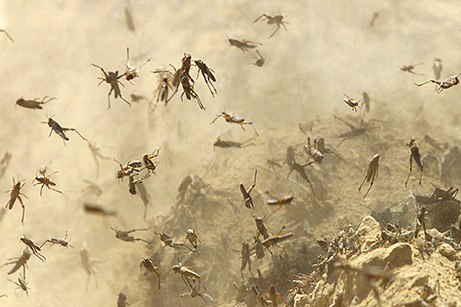
|
Ø National Disaster
Management Authority has been
constituted with the Prime Minister of India as its Chairman, a Vice Chairman with the status of Cabinet Minister, and eight members with the status of Ministers of State.
Ø Each of the members has a well defined functional domain
covering various states as also disaster specific areas of focus and concern
Ø To carry out the mandated functions, NDMA has evolved a lean and
professional organization which is IT-enabled and knowledge based. Skills and
expertise of the specialists are extensively used to address all the disaster
related issues. .
Ø A functional and operational infrastructure has been built which
is appropriate for disaster management involving uncertainties coupled with
desired plans of action.
|
|
The concept of the
organization is based on a disaster divisions-cum-secretariat system.
ü Each member of the Authority heads disaster-specific divisions
for specific disaster and functional domains. Each member has also been given
the responsibility of specified states and UTs for close interaction and
coordination.
|
|
The NDMA Secretariat,
headed by a Secretary is responsible to provide secretarial support and
continuity. It is proposed to have two Disaster Management Wings
under the Secretariat. They are :-
|
|
·
DM I wing dealing with mitigation, preparedness, plans, reconstruction,
community awareness and dealing with financial/administrative aspects.
·
DM II wing is proposed to be composed of the National Disaster Management
Operations Centre with the state-of-the-art multi-redundant communication
systems, to carry out the tasks of capacity development, training and
knowledge management.
|
…………………………………………………………………………………………………………

Disaster Management Act
- By the enactment of the Disaster Management Act 2005 (DMA),
government of India ordered the creation of the National Disaster
Management Authority (NDMA) as opposed to creating a separate ministry
recommended by the Pant committee.
- The importance that the government gave to this newly
created body can be adjudged by the fact that the NDMA is chaired by the
Prime Minister himself, with a Vice Chairman of the status of Cabinet
Minister and 8 members of the status of Ministers of State. The Vice
Chairman and the members are charged with the responsibility of running
the day to day functions of the NDMA.
- The salient features of the DMA were that it was a proactive, holistic
and integrated approach as opposed to a reactive one.
- It had the legal authority to respond and take action as
demanded by the situation and was backed by an institutional framework. And, last but not
the least, it had what its predecessor organisations did not have viz.
financial support by the creation of a Response Fund and a Mitigation
Fund.
*****************************************************************
- The disaster management set up was structured at three levels viz. national,
state and district.
- The NDMA was set up as the apex body at the national level,
while at the state level State Disaster Management Authorities (SDMA) were
set up. These were headed by the Chief Ministers.
- At the district level District Disaster Management
Authorities (DDMA) were set up. These were headed by the District
Collectors and co-chaired by elected representatives of the local
authorities.
- All these authorities were charged with the responsibility
of formulating holistic and integrated plans for disaster management and
ensuring the implementation of these plans when required.
The
executive committee of the NDMA is called National Executive Committee (NEC).
- It coordinates the response on behalf of the NDMA.
- It consists of 14
Secretaries of the government of India as well as the Chief of the
Integrated Defence Staff.
- To assist the NDMA two other bodies have been created
called the National Institute of Disaster Management (NIDM) and the
National Disaster Response Force (NDRF).
|
|
Role of
Cabinet Secretary
|
Role of Army
|
|
|
|
|
|
Role of Chief Minister
|
Role of Chief Secretary
|
Role of District Collector
|
|
Every state has a Crisis Management Committee under the chairpersonship of the Chief
Secretary,
|
|
- At present, National Disaster Response Force consist of ten battalions, three each from the BSF and CRPF and two each from CISF and ITBP.
- Each battalion have 18 self-contained specialist search and rescue teams of 45 personnel each including engineers, technicians, electricians, dog squads and medical/paramedics.
- The total strength of each battalion is 1,149. Union cabinet has also approved the conversion/up-gradation of 02 Bns from SSB.
- All the ten battalions have been equipped and trained to respond natural as well as man-made disasters.
- Four battalions of them are also trained and equipped for response during chemical, biological, radiological and nuclear (CBRN) emergencies.
Miscellaneous ---
|

|
 |
|
|

The International Nuclear and Radiological Event Scale
is not definite:
- Even though the INES scale is intended to help publicly convey the threat created by a nuclear event, designation of a certain level on the scale is not a reason to panic.
- The INES scale runs from 1 (very little danger to the general public) to 7 (widespread health and environmental impacts).
******************************************************
Tit Bits
- Yokahoma Declaration -The Yokohama Declaration was a very significant outcome of the World Conference on Natural Disaster Reduction from May 23 to 27, 1994
- The United Nations General Assembly designated the 1990s as the International Decade for Natural Disaster Reduction (IDNDR).

